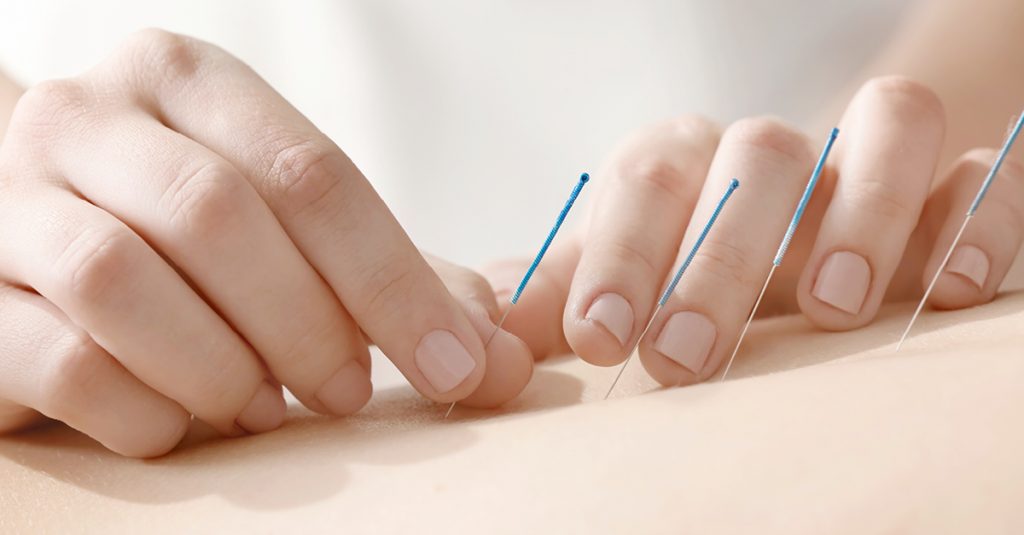Expert Advice

Acella Pharmaceuticals, LLC, is partnering with Ericca Burke, a board-certified licensed acupuncturist, to bring greater awareness to the importance of thyroid care and education. This post was sponsored by Acella Pharmaceuticals and should not be construed as medical advice. Please talk to your doctor about your individual medical situation.
Overview of the 12 Primary Channels
There are 12 primary acupuncture channels in the body where “qi,” or energy flows through the body. These channels follow a structure much like the cardiovascular or the lymphatic system. Each primary channel has a starting point and an ending point, and places along its path where it connects with other channels and organs in the body.
The 12 primary channels are:
- Lung
- Large intestine
- Stomach
- Spleen
- Heart
- Small intestine
- Bladder
- Kidney
- Xin bao (which translates to “heart envelope” or pericardium)
- San jiao (which translates to “triple burner” and refers to digestive fire and circulation)
- Gall bladder
- Liver
The 12 primary channel pathways are found laterally and symmetrically along the head, face, trunk, and limbs of the body. The channels are classified as yin or yang channels depending on the organ they are associated with. Yin channels in the upper half of the body originate in the organs and end at the fingertips, and the yang channels originate at the fingertips and end at the head. The yin channels in the lower half of the body start at the feet and end at the trunk, and the yang channels start at the head and end at the feet.
Association with Organs
Each of the 12 primary acupuncture channels is associated with an organ, which is identified by the name of the channel. The organs produce and regulate qi within the body. While there is overlap between the Chinese medicine concept of an organ and the Western anatomical functionality of an organ, the Chinese medicine perspective is more at an energetic level and focuses on how all of the organs work together holistically.
Each organ has a yin or yang designation. The yin organs are solid, dense organs that produce and store qi as well as blood, fluids and “shen,” or spirit. The yang organs are considered to be hollow and do not store qi, blood, or fluid, but rather transform and digest or excrete these substances.
The liver, heart, spleen, lungs and kidney are yin organs. The liver’s main job is to control the healthy breeze or flow of energy and fluids in the body. The liver also processes and stores blood. The heart is responsible for governing the blood and storing “shen,” or the spirit. The spleen transforms qi and blood from the food that is taken into the stomach and helps to distribute these substances to the other yin organs. The lung governs the qi received from breathing in air. The kidney is responsible for growth, development and reproduction, and this includes hormones. The kidney is therefore the organ primarily associated with thyroid function.
As for the yang organs, the stomach is responsible for digesting and transforming food and liquids that are ingested. The small intestine then purifies the transformed food and liquids and separates the pure from the impure. The impure is sent to the large intestine, which absorbs any remaining fluids that can be used by the body and excretes waste as feces. The bladder receives fluids to be excreted as urine. The gall bladder transforms qi from the liver into bile.
Acupuncture Points
Acupuncture points occur along the channels at specific points where the qi is concentrated and accessible. They are used to influence the smooth flow of qi throughout the body. There are more than 365 acupuncture points in addition to a multitude of extraordinary points throughout the body. Acupuncture points have a Chinese name, as well as a channel and number designation. For example, the third point on the kidney channel is named Taixi, which is translated to “supreme stream,” and is more commonly referred to as Kidney 3 or Ki-3. This point is the source point or principal point on the kidney channel, which means that it is used to tonify any issue with the kidney. This point is often included as part of an overall treatment plan for patients who have a thyroid dysfunction.

INDICATIONS & IMPORTANT RISK INFORMATION INCLUDING BLACK BOX WARNING
Important Risk Information
Drugs with thyroid hormone activity, alone or together with other therapeutic agents, have been used for the treatment of obesity. In euthyroid patients, doses within the range of daily hormonal requirements are ineffective for weight reduction. Larger doses may produce serious or even life-threatening manifestations of toxicity, particularly when given in association with sympathomimetic amines such as those used for their anorectic effects.
- NP Thyroid® is contraindicated in patients with uncorrected adrenal insufficiency, untreated thyrotoxicosis, and hypersensitivity to any component of the product.
- In the elderly and in patients with cardiovascular disease, NP Thyroid® should be used with greater caution than younger patients or those without cardiovascular disease.
- Use of NP Thyroid® in patients with diabetes mellitus or adrenal cortical insufficiency may worsen the intensity of their symptoms.
- The therapy of myxedema coma requires simultaneous administration of glucocorticoids.
- Concomitant use of NP Thyroid® with oral anticoagulants alters the sensitivity of oral anticoagulants. Prothrombin time should be closely monitored in thyroid-treated patients on oral anticoagulants.
- In infants, excessive doses of NP Thyroid® may produce craniosynostosis.
- Partial loss of hair may be experienced by children in the first few months of therapy but is usually transient.
- Adverse reactions associated with NP Thyroid® therapy are primarily those of hyperthyroidism due to therapeutic overdosage.
- Many drugs and some laboratory tests may alter the therapeutic response to NP Thyroid®. In addition, thyroid hormones and thyroid status have varied effects on the pharmacokinetics and actions of other drugs. Administer at least 4 hours before or after drugs that are known to interfere with absorption. Evaluate the need for dose adjustments when regularly administering within one hour of certain foods that may affect absorption.
- NP Thyroid® should not be discontinued during pregnancy, and hypothyroidism diagnosed during pregnancy should be promptly treated.
Indication
NP Thyroid® (thyroid tablets, USP) is a prescription medicine that is used to treat a condition called hypothyroidism from any cause, except for cases of temporary hypothyroidism, which is usually associated with an inflammation of the thyroid (thyroiditis). It is meant to replace or supplement a hormone that is usually made by your thyroid gland.
NP Thyroid® is also used in the treatment and prevention of normal functioning thyroid goiters, such as thyroid nodules, Hashimoto’s thyroiditis, multinodular goiter, and in the management of thyroid cancer.
